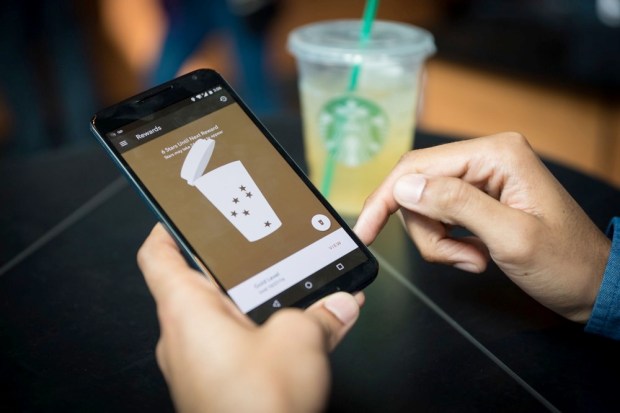Starbucks’ New Rewards Regime (And Its Discontents)

As Starbucks enthusiasts are logging into the app today, they are noticing something new and exciting. Though whether it is exciting in a good way or a bad way remains to be seen.
The new My Starbucks Rewards has a new app, with a new look and a new method of rewarding points for purchases. The old system rewarded frequency of visits — every time you purchased anything at Starbucks, be it a simple cup of black coffee or $100 worth of food and drinks for you and all your co-workers, you got a star. Every 12 stars, regular customers got a free drink. At 30 stars one qualified for Gold membership status, which opened up a variety of perks.
The message was clear: Get your morning coffee every day on the way to work with us, and once or twice a month we’ll buy you a cup of coffee and give you more incentives to keep getting your coffee with us.
Now the system rewards for the amount of money spent, instead of how often one visits. Consumers get two gold stars for every dollar they spend, and can upgrade to the Gold level at 300 points.
But jumping up rewards levels — where the discounts are deeper and the opportunities for things like doubled points (stars) are more frequent — has become more expensive or more time-consuming. That one latte a day customer used to be able to jump to the Gold Level by buying a drink on the way to work for a little over a month. Under the new system that same customer is going to be using the app daily at a Starbucks for closer to three months.
On the upside, for those who make a habit of making Starbucks runs, or who just like to eat a full meal at least once a day at Starbucks — well, the program just got a lot more rewarding.
According to Starbucks, the change came by popular demand among its 17 million active users — many of whom wanted a system that rewarded them for their spending. Plus, the changes to the reward program come bundled with the upgrade to the app’s Mobile Order & Pay function which will allow users to redeem their points there.
User Issues
From a purely technical point of view, Starbucks has warned that the change could “create slower app functionality or stars credited” within the first 48 hours.
What is more interesting will be to see how “popular” the reported popular demand for this change turns out to be.
Which is not to say this is an unusual way of awarding points. Dunkin’ Donuts uses an incredibly similar spend-based system. And whether or not users love them, companies have a very good reason to feel the love. Rewarding on the basis of spend, as opposed to frequency of use, is considered a good method to fend off so-called “points hackers” who’ve created an entire cottage industry out of exploiting rewards systems to cough up maximum benefits with minimal inputs.
Note: These people usually aren’t doing anything illegal, they are just the sorts of fastidious and obsessive types who are willing to learn every loophole in a frequent flyer program and then spend 200 days a year in the air, essentially living in a first class cabin (albeit for free).
Starbucks doesn’t have quite that extreme a version of the problem, but stories of $85 drinks that customers concoct when they claim their free reward certainly abound on the Internet. Most people are not quite committed to maximizing a reward to the point they are willing to drink a 101 shot vat (literally) of coffee, but those people exist, even if they are far from the majority of the 17 million Starbucks mobile users.
The real question that remains to be answered by Starbucks’ recent experiment in upgrading (and up pricing) its rewards program is seeing just how firmly entrenched in the habit of going to mobile those customers really are. In the early adoption-pushing phase, Starbucks had a strong incentive to give a lot away to get a lot of customers on board and using — and getting more used to using.
Now 21 percent of Starbucks transactions are on mobile — and order and pay is picking up steam fast. The service is launched, sticky and popular – it maybe doesn’t need to be quite so richly rewarding.
Which means that though there may be reports of “customers revolting” over the new upgrade (though conditions at a Boston area Starbucks were calm), no mobile pay users were seen screaming in rage, pulling out the plastic in protest or smashing their iPhone on the ground. From an outside perspective, in fact, it seems as though none noticed at all.
And even among the desperately unhappy about the newly more expensive system, it remains to be seen if they will stop using the mobile platform it was built to support, or just continue to use it and wish it were as richly rewarding as it used to be.
